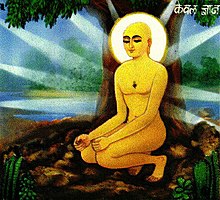Bhakti movement

Bhakti movement
Main article: Bhakti Yoga
The Bhakti movement was a development in medieval Hinduism advocating the concept of a personal God (or "Supreme Personality of Godhead"), initated by the Alvars of South India in the 6th to 9th centuries, and gaining influence throughout India by the 12th to 15th centuries, giving rise to sects such as Gaudiya Vaishnavism.[59] The Bhagavata Purana is an important text of the Bhakti movement within Vaishnavism. It focusses on the concept of bhakti (devotion to God) in the theological framework of Krishnaism.
The Bhagavata Purana discusses religious devotion as a kind of yoga, called bhaktiyoga. It also emphasizes kriyāyoga, i.e. the devotion to the deity in everday life (4.13.3).
The Bhagavata Purana is a commentary and elaboration on the Bhagavadgita, an older text of the Mahabharata epic which rose to great importance in Vaishnavism during the Bhakti movement. In the Bhagavadgita (3.3), jñānayoga is the acquisition of true knowledge, as opposed to karmayoga, the performance of the proper religious rites.
This terminology involving various yogas has given rise to the concept of the Four Yogas in modern Hinduism from the 1890s. These are
Karma Yoga
Bhakti Yoga
Raja Yoga
Jnana Yoga
In this usage, the term "Yoga" ceases to translate to "a system of meditation" and takes on the much more general sense of "religious path". Thus, Karma Yoga is "the Path of Action", Bhakti Yoga "the Path of Devotion" and Jnana Yoga "the Path of Knowledge", all standing alongside Raja Yoga, "the Path of Meditation" as alternative possibilities towards religious fulfillment.

No comments :
Post a Comment